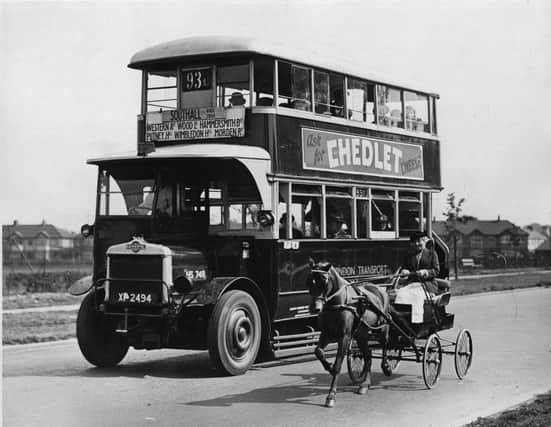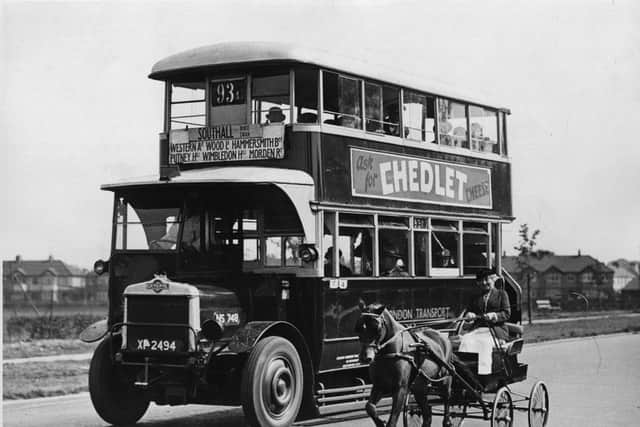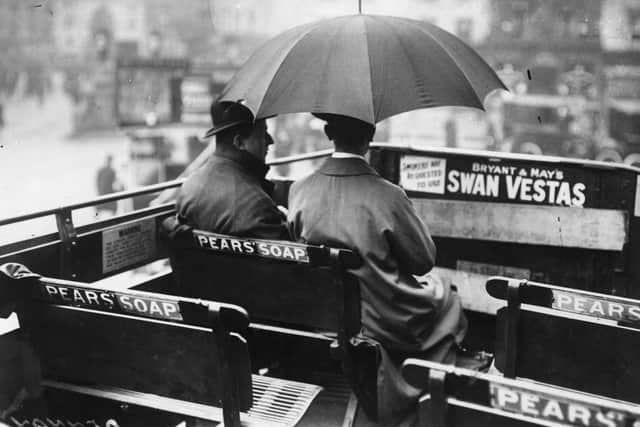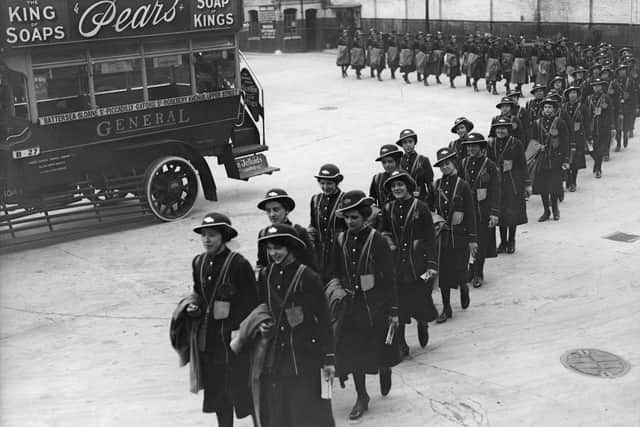Rare pictures of when horses tried to out-run the buses


Motor buses have been part of the urban landscape since the end of the 19th century – although, as we can see from one picture, the horse and cart initially tried to give them a run for their money.
They were not entirely new. The first “horse bus” service had been established in Manchester as early as 1824, with passengers picked up and set down along a predefined route, just as today.
Advertisement
Hide AdAdvertisement
Hide AdThe motorised era brought greater speed but not necessarily comfort. Not only the upper decks but also the staircases were “outside” and the upstairs seats unupholstered.


The new technology was seized upon by entrepreneurs and the Edwardian era saw a free-for-all in which competing companies plied for trade, especially in London.
But it was the inter-war period that set the pattern which continued for the rest of the century, with a new system of regulation that saw small, private operators giving way to “corporation” fleets run by local councils. Many of the displaced operators had been First World War servicemen who learnt their mechanical skills in the Army.
The buses themselves were mostly the same from town to town, but as the corporation model took hold, each began to specify its own livery, interior seat pattern and destination board arrangement.
Advertisement
Hide AdAdvertisement
Hide AdMost ran an unofficial but nevertheless rigid system of gender discrimination: the men up front in the cab and the women “clippies” inside, taking the fares.


It was a model that had barely changed by the 1970s, when TV’s On The Buses immortalised it.
Editor’s note: first and foremost - and rarely have I written down these words with more sincerity - I hope this finds you well.
Almost certainly you are here because you value the quality and the integrity of the journalism produced by The Yorkshire Post’s journalists - almost all of which live alongside you in Yorkshire, spending the wages they earn with Yorkshire businesses - who last year took this title to the industry watchdog’s Most Trusted Newspaper in Britain accolade.
Advertisement
Hide AdAdvertisement
Hide AdAnd that is why I must make an urgent request of you: as advertising revenue declines, your support becomes evermore crucial to the maintenance of the journalistic standards expected of The Yorkshire Post. If you can, safely, please buy a paper or take up a subscription. We want to continue to make you proud of Yorkshire’s National Newspaper but we are going to need your help.


Postal subscription copies can be ordered by calling 0330 4030066 or by emailing [email protected]. Vouchers, to be exchanged at retail sales outlets - our newsagents need you, too - can be subscribed to by contacting subscriptions on 0330 1235950 or by visiting www.localsubsplus.co.uk where you should select The Yorkshire Post from the list of titles available.
If you want to help right now, download our tablet app from the App / Play Stores. Every contribution you make helps to provide this county with the best regional journalism in the country.
Sincerely. Thank you.
James Mitchinson, Editor
Comment Guidelines
National World encourages reader discussion on our stories. User feedback, insights and back-and-forth exchanges add a rich layer of context to reporting. Please review our Community Guidelines before commenting.